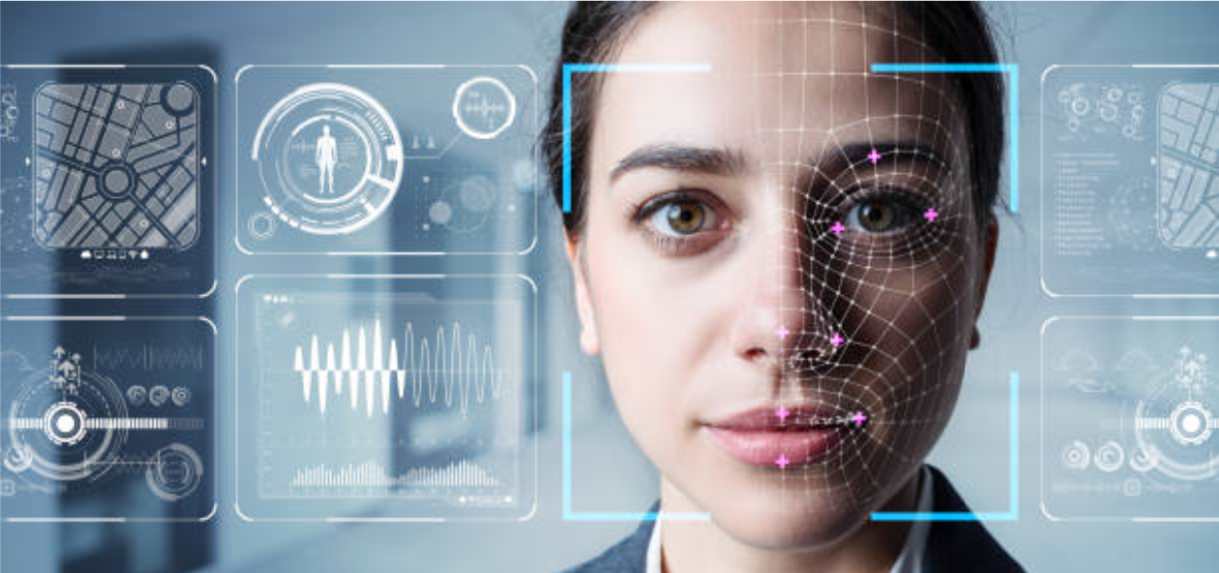Biometric facial recognition technology is one of today’s most important analytical technologies for processing images. Facial verification systems are based on the complex and seemingly absurd idea of creating computer systems that work just like the human brain.
Online face recognition systems today are catching pace and are gradually becoming one of the most widely used security technologies. From individual phones to government mass surveillance systems, biometric face recognition technology is used everywhere today. However, when it comes to its industrial commercial applications, the technology still has a lot to cover. This is in spite of it already being fairly widespread.
Biometric facial verification has the potential for applications in a range of industries. This potential is strong enough to create a powerful force strong enough to change the future.
Here are the top four industries that biometric face scan technology is transforming.
Law enforcement
Law enforcement is one of the most well-understood and well-known applications of biometric facial recognition systems. It is primarily due to this particular industry that the majority of controversies and human rights claims against facial recognition systems exist in the first place.
While such claims are valid and have solid grounds, the technology also has a powerful potential of creating the world a better place. Biometric face verification can be used to set up mass video surveillance systems to identify individuals. This is particularly important for those on certain watch lists or with a criminal background. Moreover, there are many kids and adults missing all around the world. Having facial scans of such children and getting them to government surveillance systems can help identify these children wherever they are in the world.
Just as academics and industrial research institutions are actively working to polish and advance online facial recognition systems, human rights organizations and policymakers are actively working to ensure that only benefits can be extracted from the technology. This is also essential because despite its current standing facial recognition technology is still young. However, it also has a record of misrepresenting individuals and having difficulties distinguishing between skin colors. While it may be confusing right now, the trajectory of facial recognition for law enforcement will definitely be a sharp one, no matter which way it goes.
Banking
Banks and other financial institutions can use biometric facial recognition to offer secure and personalized systems to their clients. Famous banks such as HSBC and Singapore’s OCBC are using biometric face scan to allow users to log in or process digital application systems. Overall biometric verification technology is about 97+ percent accurate. This makes it perfectly suitable for applications within the financial industry.
The use cases of biometric face verification for banks include:
- Biometric facial recognition technology allows fast in-app systems for app logins.
- Digital payments can be simplified by using face match online services. In this way, only owners can access their banking information and transaction permissions. Thus we can significantly reduce fraud and other problems.
- Biometric facial recognition systems set up at ATMs will allow users to process their payments fast. This will help eliminate the need for passwords and maybe even soon, ATM cards themselves.
- Banks can also use facial recognition systems for KYC processes before customer onboarding as well as other major steps such as awarding a loan.
Targeted marketing
Targeted marketing holds one of the most potentially widespread and profitable applications of biometric facial recognition. This type of marketing refers to systems that are based on marketing products to a very specific persona of customers.
Walgreens, a famous American pharmacy brand, was one of the pioneers among big brands to start commercial use of deep learning facial recognition technology. Walgreens decided to set up fridges equipped with biometric face scanners. These fridges also contained advertising setups. For every individual that passed in front of the fridge, the fridge identified their physical features such as skin color, hair color, etc. Based on these characters the advertising board then displayed the art specific for that person targeting their psyche.
The above example shows how extensive biometric facial recognition can be when it comes to marketing applications. In the future, we can expect to see even more advanced examples.
Gambling bars and casinos
Casinos process identity verification of individuals for a range of reasons. First and foremost, underage individuals or minors are strictly prohibited from entering all sorts of casinos and gambling bars. This is one of the prime reasons why each and every such site actively checks for IDs to filter out minors.
Biometric facial recognition can help make this process of ID verification faster. However, besides this, there are other internal applications too. For example, casinos can use technology to better identify their regular customers and offer them improved services such as discounts or VIP passes. Similarly tracking expressions and visual movements can help identify those who are cheating. In this way, casinos can improve their brand reputation as well as the services they offer to their clients, thus, positioning themselves as better businesses among competitors.
Conclusion
Biometric facial recognition technology is a game changer for many industries with the benefits of facial recognition essentially being endless. While we have talked only about the four major ones, the benefits and applications of facial recognition online systems are unlimited and have the power to change and shape the future of dozens of industries. Biometric face scan systems are cheap, efficient, and highly accurate which makes them the ideal solution for those on the lookout for good security systems.


